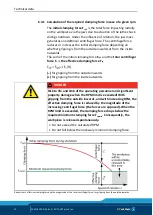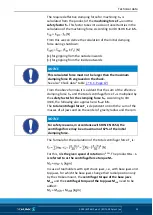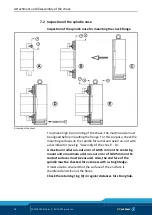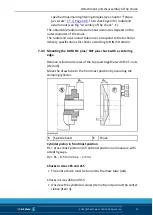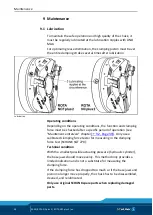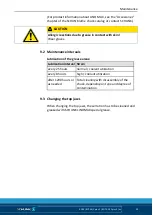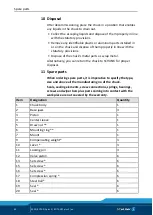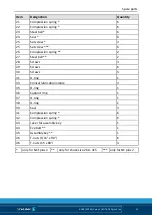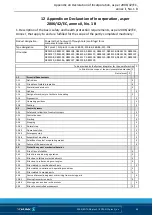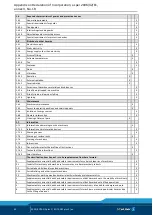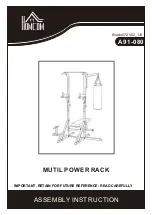
Function and handling
34
02.00|ROTA NC plus 2 / ROTA NCF plus 2 |en
Function and handling
The item numbers specified for the corresponding individual
components relate to chapter drawings.
Function and handling
The wedge-hook chuck is actuated by means of a rotating solid or
through-hole cylinder. The axial pulling and pushing forces are
deflected via the wedge hook angle in the piston and the base
jaws to the radial jaw clamping force.
The clamping and opening path of the clamping jaws is defined by
the clamping cylinder. The serration of the base jaws can be used
to hold standard jaws as well as special jaws for workpieces with
difficult shapes. The top jaws are moved or changed in open
clamping position.
CAUTION
There is a risk of crushing during manual loading due to the
large jaw stroke.
We recommend automatic loading.
If manual loading is used, set up the jaw position so that there is
no risk of injury when inserting the parts. The maximum opening
gap must be less than 4 mm when the workpiece is in contact
with one of the jaws.
Jaw Change or supplement of jaws
Chuck jaws for maximum clamping repeat accuracy must be
turned or ground in the chuck under clamping pressure. The
clamping force for machining the top jaws must correspond to
approximately 67% (2/3) of the maximum clamping force for the
respective chuck (according to DIN ISO 3442-3).
When turning or grinding, ensure that the jaw turning ring or
turning pin is clamped
by the top jaws
and not by the base jaws.
Tighten the jaw fastening screws (screw quality 12.9) with the
prescribed torque (see Chapter "Screw tightening torques"
Tighten the mounting screws of the top jaws with a torque
wrench. Never tighten the Allen key with an extension pipe or by
hitting it with a hammer.
8
8.1
8.2



